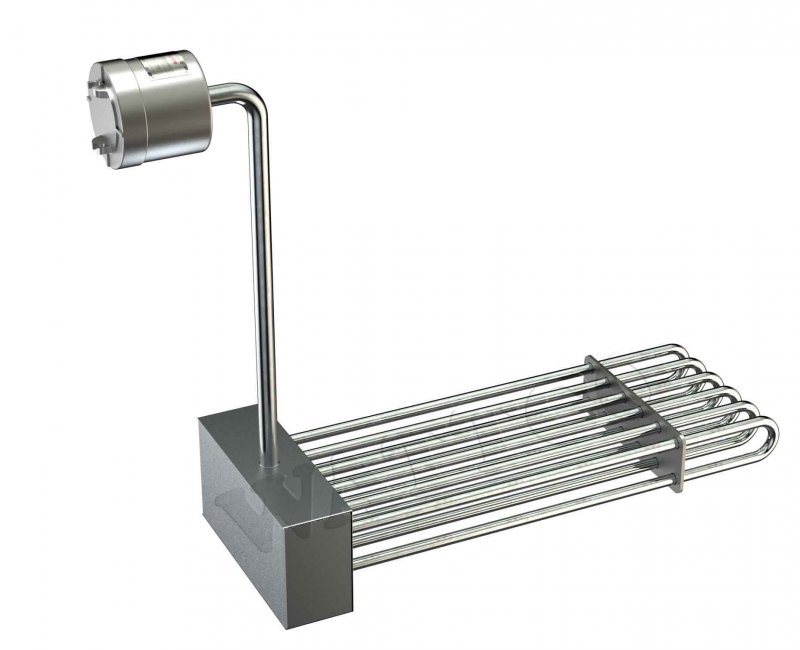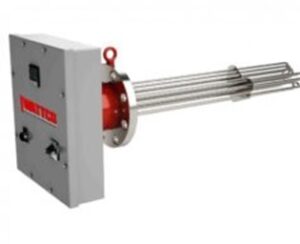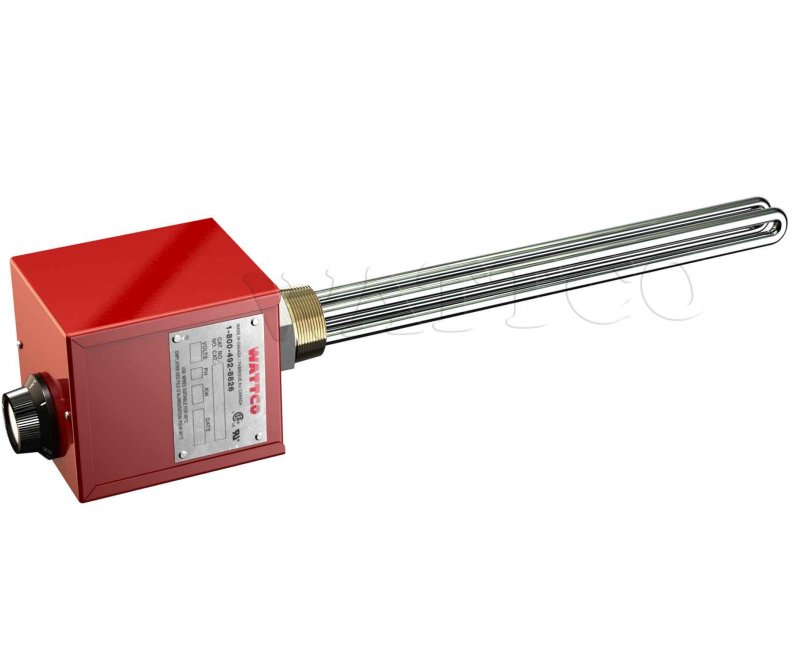Introduction To Immersion Heaters
Last updated on May 13th, 2025 at 06:22 am
Immersion heaters are used in industrial processes to keep different liquids like water, oil, chemicals along with gases neutralized at a suitable temperature. These process heaters are installed within or outside the tank in a way that the entire controlling mechanism is kept away from the actual tank away from the content inside to prevent from erosion. Given below are the different types of industrial heaters along with specification and uses.
Over The Side
These heaters are especially designed for vessel tanks and are installed from the top, all the way to the bottom. When turned ON, the heat is evenly distributed which allows the content within the tank to stay at a desired temperature. For power connection, lead wires and terminal houses are also offered; whereas, the control box is kept outside the tank, making it easier to manage the entire contraption from outside. 
Heating Element Used During Manufacture
As these heaters are exposed to different liquids and gases at a high temperature, therefore, it is necessary for the heating elements to be sturdy to be able to withstand almost any environment along with being corrosion free.
Due to this reason, the heating device is made up of elements like steel, copper, casted iron, incoloy, stainless steel, with PFA or titanium coating. The shape of the heater along with size, watt density as well as mounting technique varies along with the type of material used as a heating element.
Applications
Depending on the heating element, you may apply the device cautiously while processing different viscous content like water, oils, solvents, salts, acidic medium, plating baths and other substances that can be heated by immersion heaters.
Convenience
Maintenance of over the side heater is much easier as compared to other types. These are considered as more portable due the ease of removing it for cleaning, maintaining and even replacing if something goes haywire. When the need of cleaning the tank arises, you can easily remove the device and reinstall it again when done.
Flanged Immersion Heaters
 Another type of immersion heater used for heating tanks is known as flanged heater. These heaters are also used in circulation heaters that are used to heat water and other types of liquids.
Another type of immersion heater used for heating tanks is known as flanged heater. These heaters are also used in circulation heaters that are used to heat water and other types of liquids.
These are installed in a way, whereby the actual heating device is immersed within the tank exposing it to the content inside, while the control box is fixed at the exterior wall. The name comes as the device consists of a hairpin bent tubular element welded into a flange with wiring box for electrical connection.
These heaters are available with variation in voltages, sizes, sheath material kilowatt ranges and terminal housings, making them perfect for almost every type of applications for the heating purposes.
Flanged heaters are widely used to heat water, oil, liquid, chemicals and gas inside the tank. Heat is directly provided to the content within and is divided evenly that makes it ideal for prevention against corrosion.
Specifications
The flanged pipes of these heaters are available in sizes ranging from 3 to 14 inches in diameter supporting high tank pressure. These pipes are then matched with the appropriate flanged which can easily be obtained from industrial markets. You can apply it directly to large tanks along with pressurized vehicles.
Screw Plug/Threaded Immersion Heaters
Screw plug heaters are quite similar to flanged ones as they also contain hairpin bent tubular elements welded to the control box. These are available in many different pipe thread sizes accordingly to the depth of the tank.  Uses These heaters are mostly used to protect the content within the tank from freezing along with oil and heat transfer from different units.
Uses These heaters are mostly used to protect the content within the tank from freezing along with oil and heat transfer from different units.
An Insight On Thermostat For All Types Of Immersion Heaters
You are likely to find built-in thermostat in flanged and screw plug heaters. In large tanks where more than one device is used to heat, a single control mechanism might be used to operate all the heaters within. In case of heaters which have a thermostat located separately from the actual device, you will find it at a distance of four to six inches above. You can also install electronic control upon request.
An emerging trend is a closed room, which is located far away from the tank and heater housing the entire control mechanism operating the heater. This is considered viable for safety and to prevent direct exposure to the tank and heater itself.
Use in Industries
The sole function of immersion heaters is to produce heat within a tank so they are considered as a valuable tool within many industries that are engaged in the manufacture of items like oil, chemicals, petroleum and similar others. The correct way to install these is to dip the entire coil that is the actual heating tool within the liquid that is to be treated.
Oil Immersion Heaters
They are installed in the tank in such a way that once fixed they cannot be detached. Oil immersion heaters are designed with a powerful body with tough technological specifications to make them adjustable to almost any environment and are also considered as long lasting as compared to other types.
These are smaller in size, hence require little space to install them. “Pocket tube” which is the actual control box is located at the exterior of the device for prevention against corrosion and from direct exposure to oil itself. The surface load of these heaters is always kept constant, to prevent the carbon layer from developing over the device.
Also read: How to design Immersion Heaters for Fluids
Technical Details
The base of immersion heater is metallic which is carefully welded to the device. Each heater consist of a rod coated with finer quality of Nickel Chromium wire, with Magnesium Oxide that is used as an insulator for quick heating along with prevention against rusting. Almost all of the heaters are made shock resistant but still it is advised not to touch or expose any body part to the device directly. As the temperature controlling mechanism is built within, you can easily configure and adjust the temperature of the tank as desired.
Check below for more details;
Voltage – 24Vdc to 3x690Vac
Immersion Length – As per requirement
Temperature Control – Fixed or adjustable
Heating Material – Brass or stainless steel
Control Box – Electrified illumine or copper, coated steel
